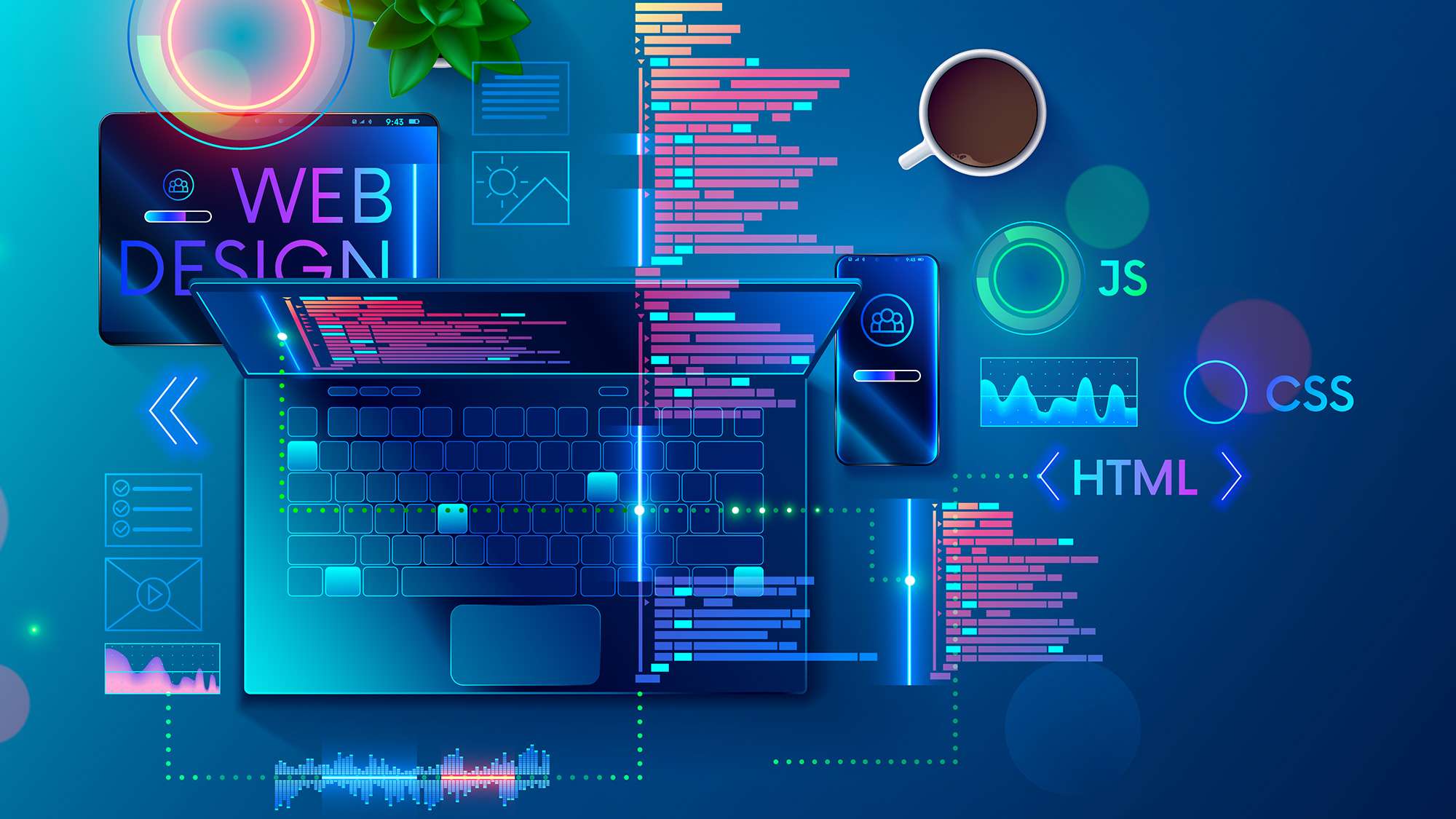Imaginative Website Design Solutions for Modern and Engaging Websites
In the world of web design, the pursuit of contemporary and interesting services has come to be significantly crucial for companies aiming to catch user attention. By incorporating bold shade plans, interactive aspects, and receptive layouts, designers can develop experiences that not only reverberate with individuals but also boost brand identity.
Accepting Vibrant Color Plans
In website design, the critical use strong color systems can substantially enhance individual involvement and brand identity. By utilizing vibrant colors, designers can produce aesthetically striking sites that catch interest and foster a remarkable experience. An appropriate color scheme not only mirrors a business's worths but likewise stimulates certain emotions that can affect customer habits.
Vibrant colors can be used to guide individuals' focus to key components such as phone call to activity, improving conversion rates. Utilizing contrasting shades for buttons and links can make these aspects stand out, prompting individuals to communicate even more conveniently. Moreover, a natural color pattern across the web site enhances brand recognition, producing a sense of familiarity and trust among site visitors.
Nevertheless, it is important to balance strong shades with ample white room to avoid overwhelming users. Effective usage of typography additionally matches vibrant colors, guaranteeing readability while preserving visual allure. Inevitably, embracing bold color design in website design not only raises aesthetic quality but likewise plays an integral role in attaining critical organization objectives, making it a vital consideration for modern-day web development.

Making Use Of Interactive Components
Interactive aspects are important in modern-day website design, as they considerably enhance customer interaction and create a more dynamic searching experience. By integrating features such as animations, float results, and clickable aspects, websites can motivate users to check out material extra completely and return for future sees.

Micro-interactions, such as refined computer animations when a button is clicked or a form is sent, can additionally boost the individual experience by supplying prompt responses. These little details can make the site feel more receptive and active, cultivating a feeling of link between users and the site.
In addition, gamification aspects, such as rewards for finishing particular actions, can motivate users to involve with the material much more deeply. By thoughtfully integrating these interactive components, web designers can create an unforgettable and engaging on-line experience that reverberates with customers and motivates them to return.
Applying Receptive Design
Carrying out receptive style is essential in today's multi-device landscape, ensuring that websites supply an optimal watching experience across numerous display sizes. As individuals progressively access the net through mobile phones, tablet computers, and desktops, a one-size-fits-all technique is no much longer practical. Receptive design enables smooth navigation and interaction, adapting format and content to fit the device being utilized.
Key see here now principles of receptive layout include fluid grids, versatile pictures, and media questions. Liquid grids utilize loved one devices, such as percentages, rather than taken care of pixels, making it possible for components to resize proportionately. Flexible images scale within their consisting of elements, stopping overflow and maintaining visual honesty. Media queries promote the application of various designs based on the gadget's attributes, such as size, height, or resolution, allowing designers to tailor the individual experience effectively.
Moreover, responsive style boosts SEO efficiency, as online search engine favor mobile-friendly sites. By executing responsive design, organizations not just improve customer contentment and interaction however likewise increase their reach in a competitive electronic landscape. As innovation proceeds to progress, embracing receptive style her response has ended up being a fundamental technique for any kind of modern-day and interesting web site.
Integrating Multimedia Web Content
Multimedia material plays an essential function in producing interesting and vibrant web experiences that capture individuals' focus and enhance understanding. By combining message, pictures, audio, and video clip, sites can offer a richer story that interest different learning designs and preferences. This assimilation not just reinforces customer engagement yet also help in sharing complicated concepts succinctly.
Integrating top quality images and infographics can damage up textual web content, making it a lot more digestible. Video clip tutorials and presentations can give extensive understandings that static material might not completely communicate. Audio aspects, such as podcasts or history music, can additionally enhance the environment of a site, developing a more immersive experience.
In addition, the tactical usage of multimedia can boost search engine optimization performance, as online search engine prefer varied content kinds, raising visibility. It is important to make certain that multimedia components do not prevent web page lots times, as this can lead to user stress. By balancing multimedia combination with performance considerations, internet developers can create visually attractive and useful internet sites that reverberate with individuals, promoting a deeper link and motivating return visits.
Prioritizing Individual Experience

To achieve an ideal customer experience, designers need to concentrate on a number of vital concepts. First, receptive layout is crucial; sites need to adapt flawlessly to numerous gadgets and screen sizes. This ease of access makes certain that customers can engage with material despite their chosen platform. Secondly, quality in design and hierarchy is crucial. Clear phone calls to activity, legible typography, and arranged content guide individuals, lowering cognitive lots.
Ultimately, focusing on UX not just boosts user complete satisfaction however additionally drives involvement and conversion prices, making it a vital element of contemporary web style approaches. By positioning individuals at the center of design initiatives, web sites can create long-term, favorable impacts that urge return visits.
Conclusion
To conclude, modern web layout services that stress bold color pattern, interactive components, receptive layout, and multimedia web content dramatically improve user involvement and fulfillment. Focusing on customer experience with clear layouts and continual feedback better adds to improved conversion rates. By embracing these strategies, websites can effectively astound site visitors and strengthen brand name identity, eventually leading to a much more dynamic and engaging on-line existence. The combination of these design concepts is necessary for accomplishing modern-day web style goals.